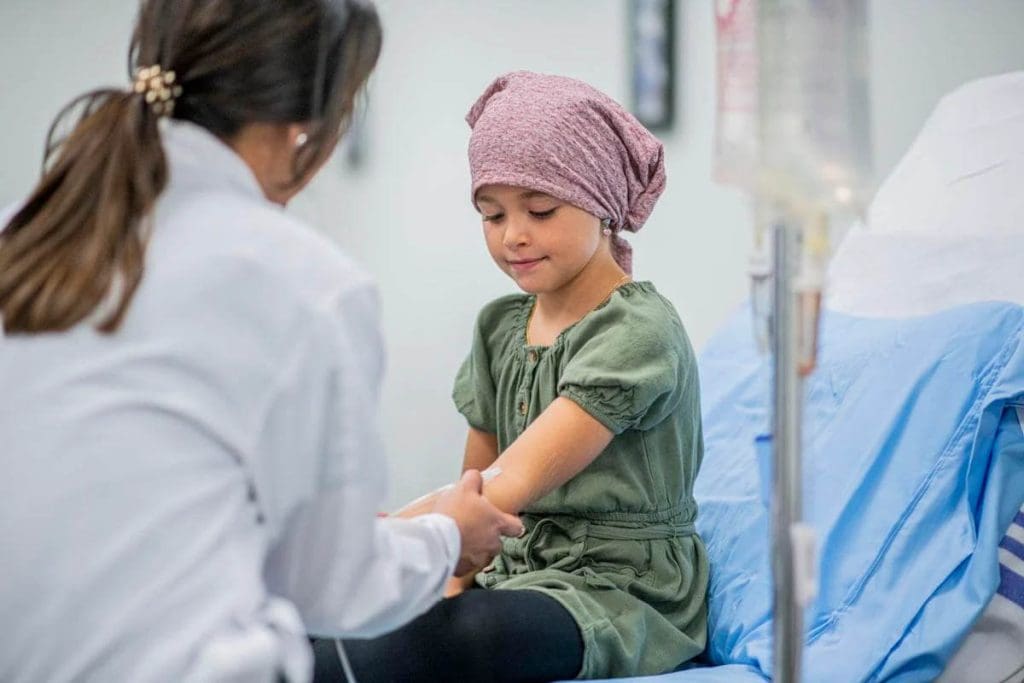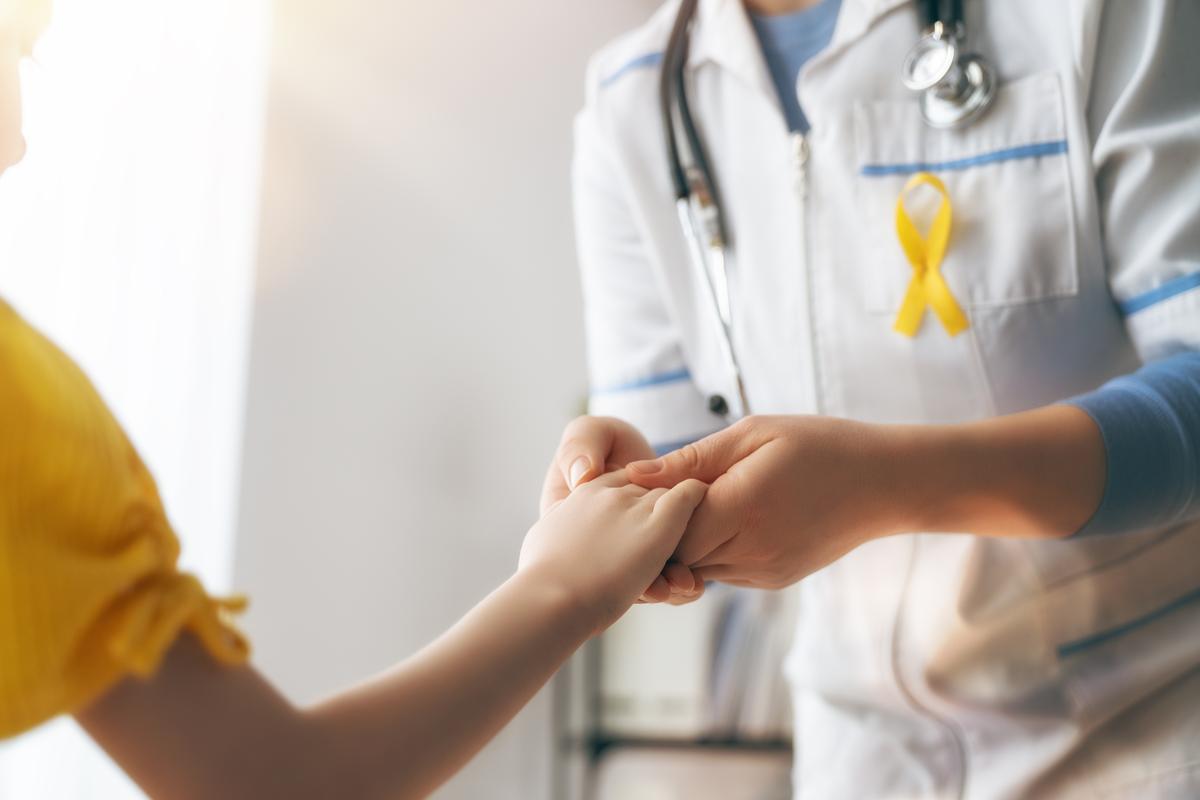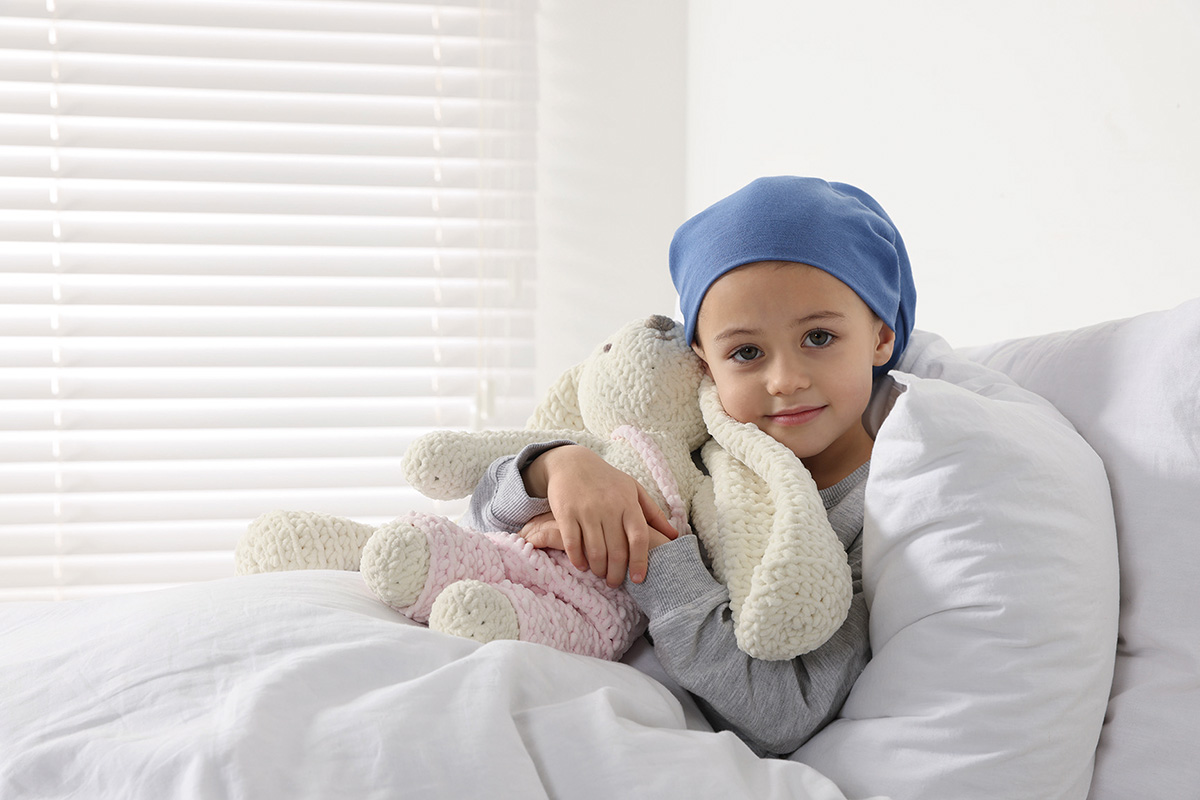Last Updated on November 13, 2025 by
Childhood cancers are a big worry worldwide. Every year, about 400,000 kids and teens get diagnosed. Sadly, many of these cancers can’t be stopped because of genes or other things we can’t change.

It’s key to know cancer childhood symptoms early. This helps doctors treat them better. Spotting the signs and symptoms of cancer in kids can really help them live longer.
Every year, about 400,000 kids and teens get cancer worldwide. This is a big health problem. Knowing the facts about pediatric cancer helps us raise awareness and improve treatment.
There are around 400,000 new cases of childhood cancer each year. This shows how big a problem it is. Most of these cases happen in kids under 15, with more boys than girls affected.

Leukemia is the top childhood cancer, making up about 30% of cases. Other common cancers include brain tumors, lymphomas, and solid tumors like neuroblastoma. Quick diagnosis and treatment are key to saving lives.
Survival rates vary greatly between rich and poor countries. In wealthy countries, over 80% of kids with cancer can be cured. But in poorer countries, the survival rate is less than 30%. This is because of limited healthcare and late diagnosis.
Most childhood cancers are not preventable because of their complex origins. Unlike adult cancers, which are often linked to lifestyle and environment, childhood cancers have different causes.

Many childhood cancers come from genetic mutations or chromosomal abnormalities that start early, even before birth. These changes can cause cells to grow out of control and form tumors. For example, some genetic syndromes, like Down syndrome, raise the risk of certain leukemias.
These genetic issues show why childhood cancers are hard to prevent. It’s not just about changing your lifestyle or avoiding certain environments.
There’s strong evidence that some adult cancers are caused by lifestyle and environment. But for childhood cancers, the evidence is not as strong. Some studies hint at links between environment and childhood cancer, but the results are not solid.
Experts agree that most childhood cancers are not caused by things we can change. This means we can’t prevent them by changing our lifestyle or avoiding certain environments.
Adult and childhood cancers have different causes. Adult cancers often come from years of genetic damage, influenced by smoking, diet, and toxins. Childhood cancers, on the other hand, usually start from genetic mistakes or errors during fetal development or early childhood.
This difference shows why what works to prevent adult cancers won’t work for childhood cancers.
It’s vital for parents to know the signs of pediatric cancer. This ensures their child gets the right medical care. Childhood cancer symptoms can be hard to spot because they often look like common illnesses.
Some signs that might mean cancer include fever, fatigue, and unexplained weight loss. These symptoms can also mean other things, but seeing a doctor is key if they don’t go away.
A long-lasting fever might point to leukemia, a blood and bone marrow cancer. Unexplained weight loss and tiredness could mean lymphoma or neuroblastoma.
Some symptoms depend on the cancer type. For example, brain tumors can cause headaches, nausea, and vision problems. Neuroblastoma might show as a neck, chest, or belly lump, leading to breathing or swallowing trouble.
Bone pain or swelling could mean bone cancer. Tumors in the belly, like Wilms tumor, might cause it to swell or hurt.
Behavioral changes are also key signs. Changes in appetite, mood swings, or being very tired can hint at serious issues, like cancer. For example, a child with leukemia might get cranky or very tired.
Parents should watch for these signs and talk to their child’s doctor. This is important if other symptoms are present too.
Early detection and diagnosis are key in fighting childhood cancer. They greatly improve treatment results. The American Cancer Society says early diagnosis is essential for effective cancer treatment. Regular monitoring and prompt medical attention can greatly improve a child’s cancer prognosis.
Regular pediatric check-ups are vital for catching childhood cancer early. These visits help doctors keep an eye on a child’s health. They can spot unusual signs or symptoms and act quickly if needed. The National Cancer Institute notes, “Early detection of cancer can significantly improve treatment options and outcomes.”
“The earlier cancer is diagnosed, the more effective treatment is likely to be.”
Diagnosing childhood cancer involves various steps, from physical exams to advanced imaging like MRI and CT scans. These tools help doctors accurately find the cancer type and stage. This is key for creating a good treatment plan.
Genetic testing is suggested for kids with a family history of cancer or suspected genetic syndromes. It can find genetic mutations that raise cancer risk. This allows for early monitoring and intervention. Experts say genetic testing is a vital tool in managing childhood cancer.
Treating childhood cancer is complex and involves many steps. It’s all about the patient. Finding the right treatments is key to better survival rates and quality of life for survivors.
Today, treating childhood cancer often means using surgery, chemotherapy, and radiation therapy. Surgery removes tumors. Chemotherapy and radiation therapy kill cancer cells in other parts of the body. These methods have gotten better to reduce side effects and work better.
The treatment plan depends on the cancer type, stage, and the child’s health. For example, leukemia usually gets treated with chemotherapy. Brain tumors might need surgery and radiation.
New cancer treatments have greatly increased survival chances for kids. Immunotherapy uses the body’s immune system to fight cancer. It’s a new way to treat cancer. Other new methods include targeted therapy and precision medicine, which are tailored to each patient’s genetic makeup.
It’s important to keep up with survivors of childhood cancer. Regular check-ups help catch any late effects of treatment. This includes organ damage or secondary cancers. Making sure survivors have a good quality of life means fixing these problems quickly and providing support when needed.
By improving treatment approaches and survivorship care, we can keep making progress for kids with cancer.
Understanding childhood cancer is key for early detection and effective treatment. Most childhood cancers can’t be prevented. But, we must keep researching their causes and finding better treatments.
Raising awareness about childhood cancer is vital for better outcomes. By knowing the symptoms and supporting research, we aim for higher survival rates and better lives for survivors.
As we move forward, research and awareness must be our top priorities. Organizations and individuals can help by supporting efforts to improve childhood cancer treatment and care.
Together, we can change the lives of children with cancer and their families. This will boost awareness and research in childhood cancer.
Signs and symptoms of childhood cancer include persistent fever and fatigue. Weight loss is also common. Symptoms vary by cancer type, like pain or swelling.
About 400,000 kids and teens get cancer every year globally.
Leukemia is a top pediatric cancer, making up a big part of childhood cancer cases.
Finding cancer early is key. It greatly boosts treatment success and survival chances for kids.
Most childhood cancers can’t be prevented due to genetic factors. But knowing the signs helps catch it early.
In rich countries, over 80% of kids with cancer can be cured. But in poorer countries, the survival rate is under 30%.
Treatments include surgery, chemotherapy, and radiation. New therapies are also helping more kids survive.
Long-term care is vital. It helps ensure survivors live well and deals with treatment side effects.
Subscribe to our e-newsletter to stay informed about the latest innovations in the world of health and exclusive offers!